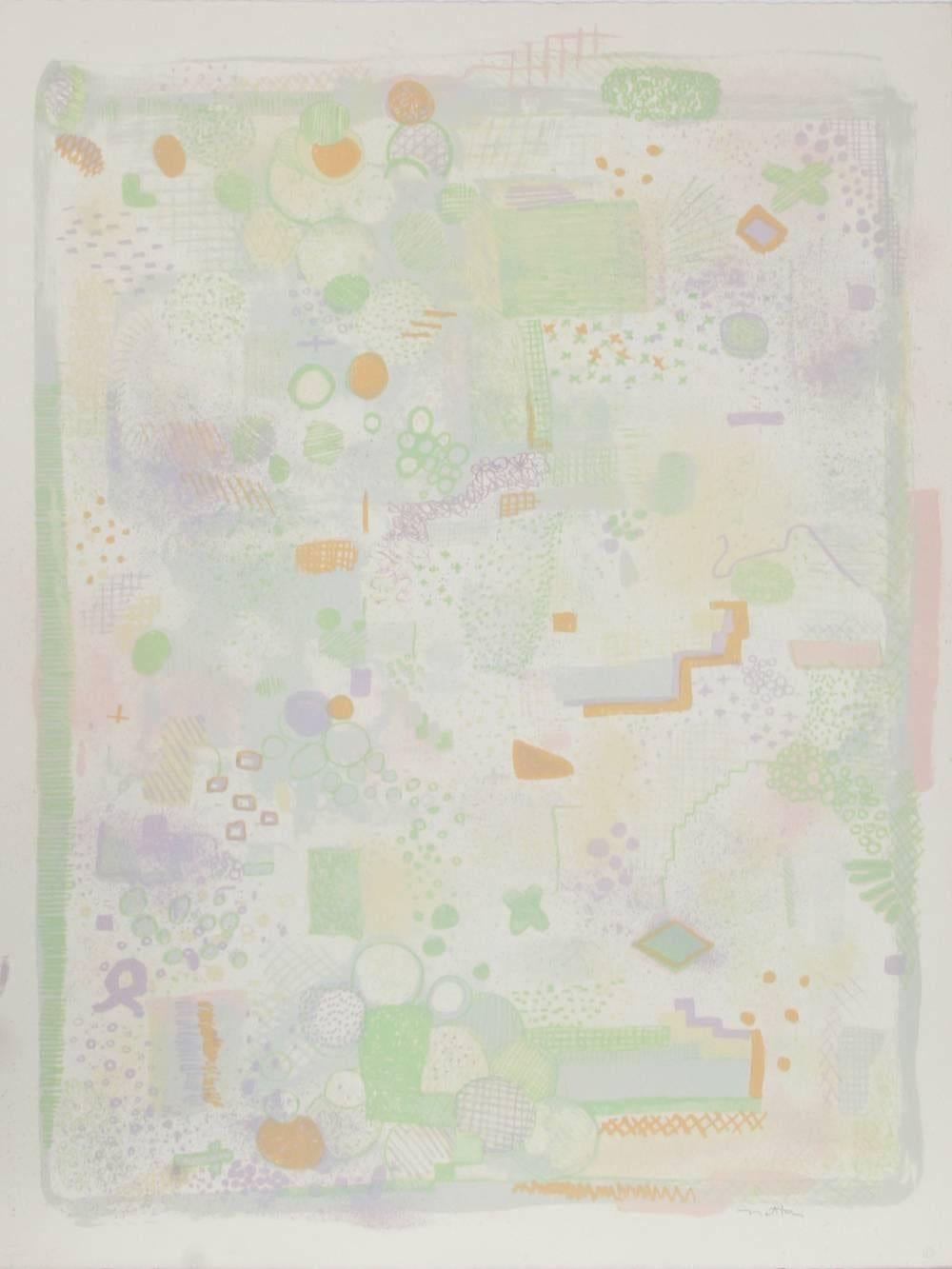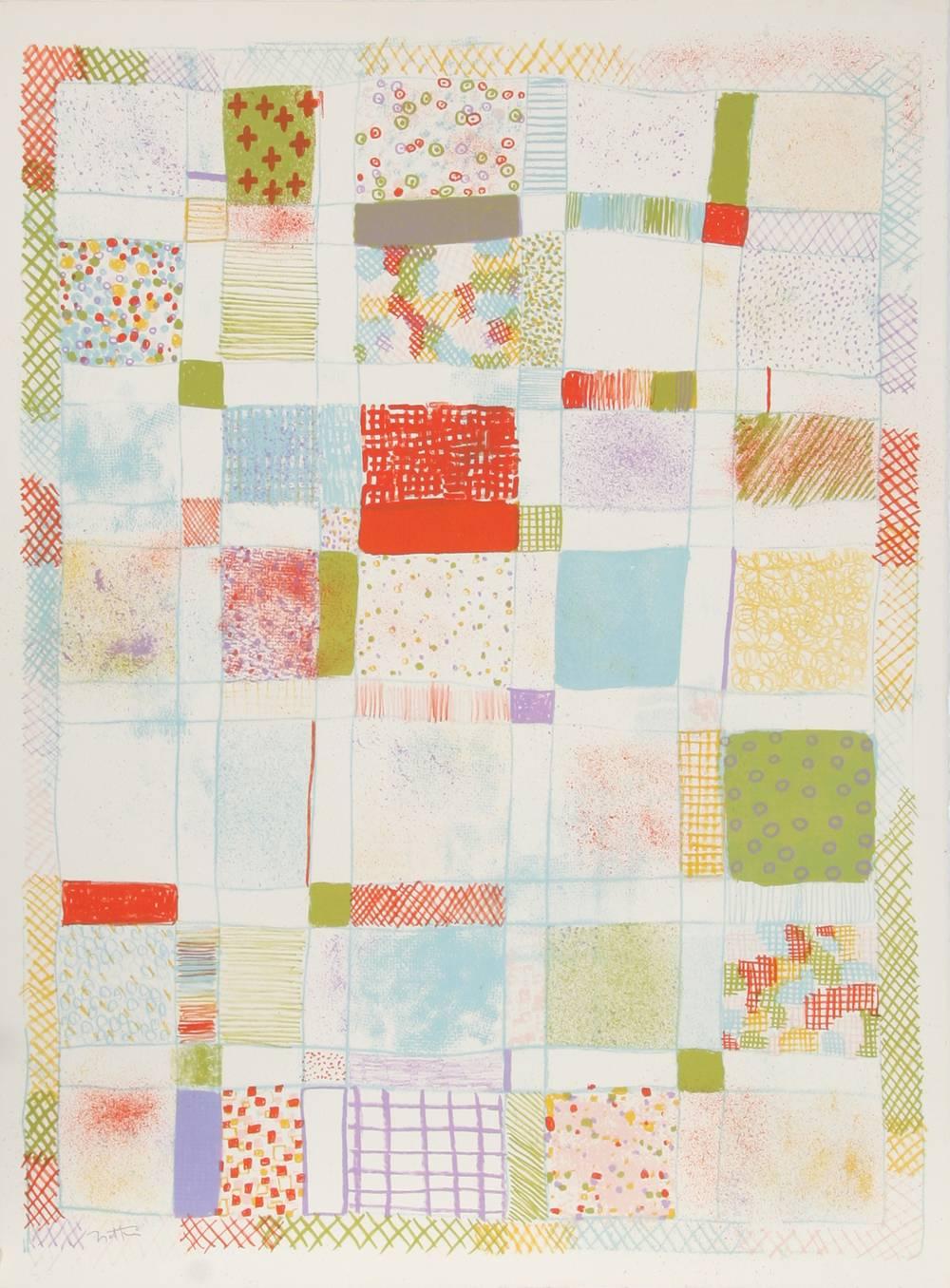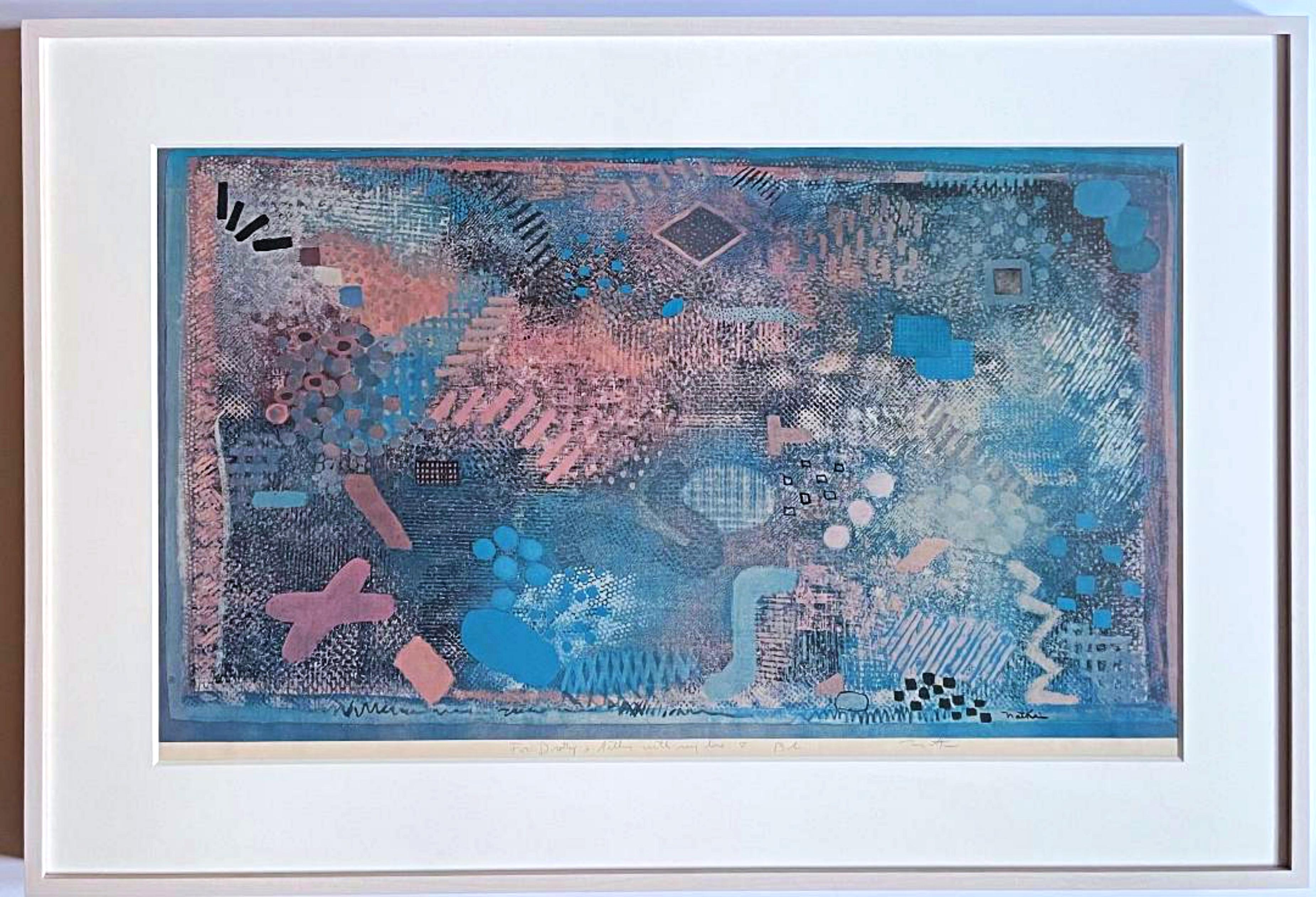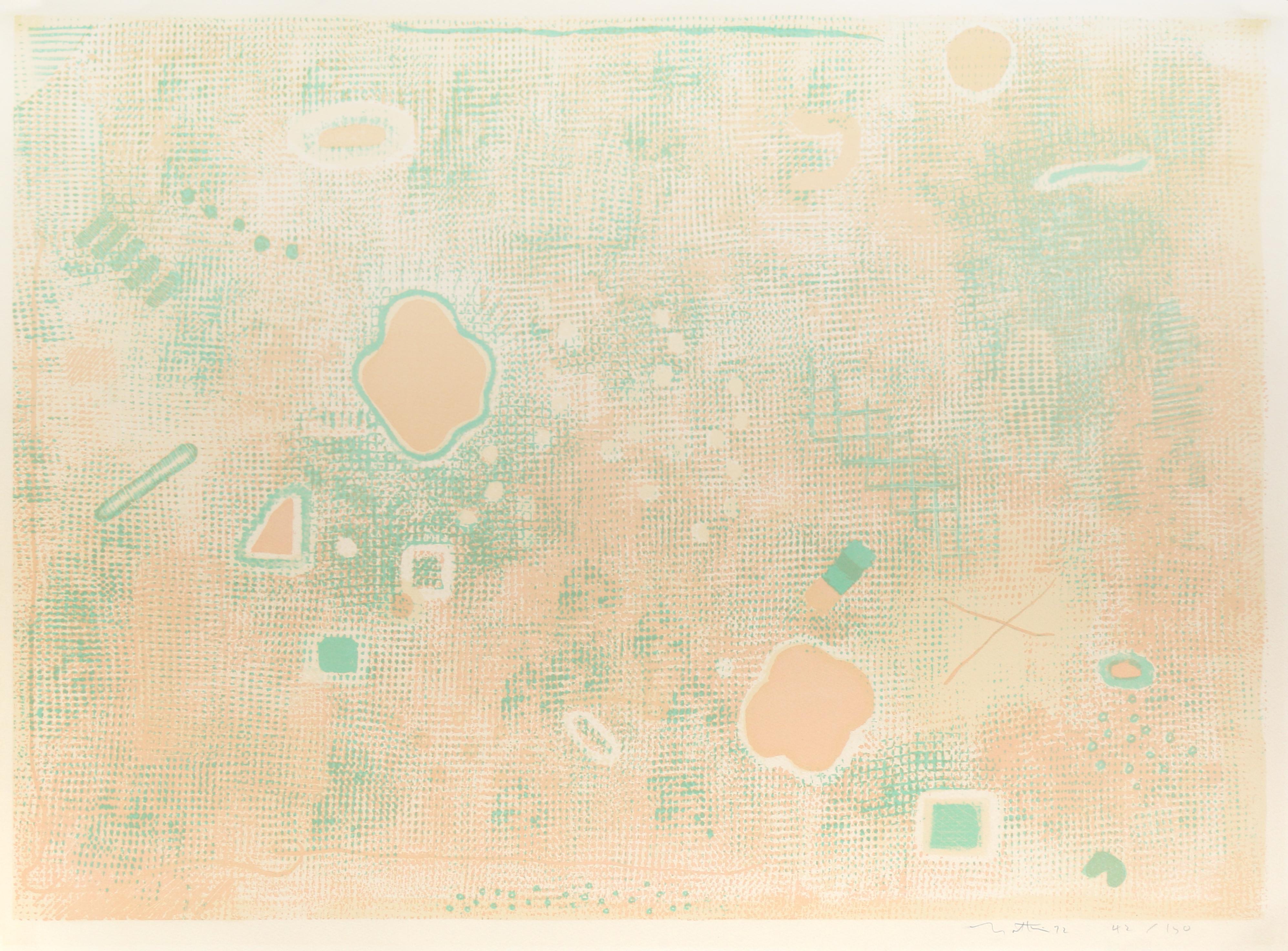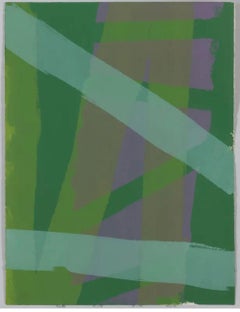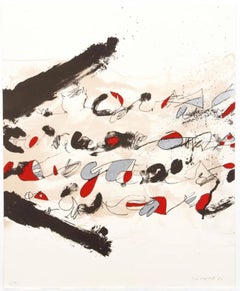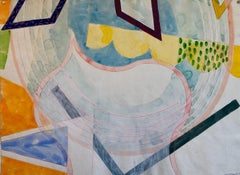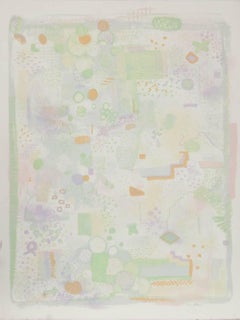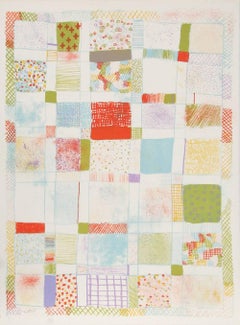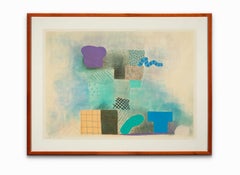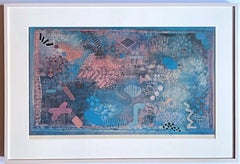Items Similar to Large 1960s Abstract Lithograph Field Mouse II Robert Natkin
Want more images or videos?
Request additional images or videos from the seller
1 of 8
Robert NatkinLarge 1960s Abstract Lithograph Field Mouse II Robert Natkin1969
1969
$950
£738.37
€841.91
CA$1,363.01
A$1,483.67
CHF 784.35
MX$17,939.31
NOK 9,832.64
SEK 9,203.34
DKK 6,285.36
About the Item
Large "Field Mouse II (1969) Lithograph
Robert Natkin (1930-2010) was a New York artist known for his abstract expressionist paintings.
Born in 1930 in Chicago, Robert Natkin grew up in an extended Russian-Jewish immigrant family. In 1948 he began studies at the Art School of the Art Institute of Chicago. He was strongly influenced by the Post-Impressionists and Abstract Expressionism, the latter through an article in Life magazine. In 1952 he lived, briefly, in New York where he came under the influence of Willem de Kooning.
In 1953, Natkin returned to Chicago and began exhibiting, occasionally, in shows and exhibitions. He became closely associated with other Chicago artists, such as Stanley Sourelis, Ronald Slowinski, Richard Bogart and Judith Dolnick, among others. In 1957, Natkin married artist Judith Dolnick six weeks after they met. In 1958, Natkin had a one-man show at the Wells Street Gallery and in 1959, he moved to New York where he began exhibiting with the Poindexter Gallery. In 1960 he was included in the “Young America” exhibition at the Whitney Museum of American Art. He was appointed as Artist-in-Residence at the Kalamazoo Arts Center in 1964 and in 1969 he participated in a retrospective solo exhibition at the San Francisco Museum of Art.
Natkin frequently used cloths and netting as stencils to achieve textures described the critic John Russell of the New York Times in 1978 as having a "worked-over look that suggests that the painting has been traversed over and over by a very small truck that has just had its tires, retreaded"
His work bears affinities both to Lyrical Abstraction and to Tachisme artists such as Nicolas de Staël, Serge Poliakoff, Andre Lanskoy, Hans Hartung, Jean-Paul Riopelle, Gustave Singier, Alfred Manessier, Roger Bissiere, Lyrical Abstraction arose in the 1960s and 70s, following the challenge of Minimalism and Conceptual art. Many artists began moving away from geometric, hard-edge, and minimal styles, toward more lyrical, sensuous, romantic abstractions worked in a loose gestural style. These "lyrical abstractionists" sought to expand the boundaries of abstract painting, and to revive and reinvigorate a painterly 'tradition' in American art. At the same time, these artists sought to reinstate the primacy of line and color as formal elements in works composed according to aesthetic principles – rather than as the visual representation of sociopolitical realities or philosophical theories." "Characterized by intuitive and loose paint handling, spontaneous expression, illusionist space, acrylic staining, process, occasional imagery, and other painterly techniques, the abstract works included in this exhibition sing with rich fluid color and quiet energy. Artists associated with Lyrical Abstraction include: Natvar Bhavsar, Lamar Briggs, Friedel Dzubas, Sam Francis, Ronnie Landfield, Pat Lipsky, Joan Mitchell, Robert Natkin, Jules Olitski, Larry Poons, Garry Rich, Larry Zox, Helen Frankenthaler and Morris Louis. Screenprint, His paintings are in the collections of the Metropolitan Museum of Art, the Whitney Museum of American Art and the Hirshhorn Museum and Sculpture Garden.
The Albright-Knox Art Gallery, Buffalo, New York
The Art Institute of Chicago, Chicago, Illinois
The Boca Raton Museum of Art, Boca Raton, Florida
The Brooklyn Museum of Art, New York
The Butler Institute of American Art, Youngstown, Ohio
Centre Pompidou, Paris, France
The Columbus Museum of Art, Columbus, Ohio
Fogg Art Museum, Harvard University Art Museums, Cambridge, Massachusetts
The Hirshhorn Museum and Sculpture Garden, Smithsonian Institution, Washington, DC
Krannert Art Museum, University of Illinois, Champaign-Urbana, Illinois
Los Angeles County Museum of Art, Los Angeles, California
The Metropolitan Museum of Art, New York City
The Mint Museum of Art, Charlotte, North Carolina
Pennsylvania State University, University Park
Rhode Island School of Design, Providence, Rhode Island
Carnegie Institute, Pittsburgh
The Museum of Fine Arts, Houston
The Museum of Modern Art, New York City
National Gallery of Australia, Canberra, Australia
New Britain Museum of American Art, New Britain, Connecticut
Oklahoma Art Center, Oklahoma City
San Diego Museum of Art, San Diego
The Solomon R. Guggenheim Museum, New York
Wadsworth Atheneum, Hartford, Connecticut
Whitney Museum of American Art, New York
Worcester Art Museum, Worcester, Massachusetts
- Creator:Robert Natkin (1930-2010, American)
- Creation Year:1969
- Dimensions:Height: 31.25 in (79.38 cm)Width: 24 in (60.96 cm)
- Medium:
- Movement & Style:
- Period:
- Condition:Minor creasing, should mat out flat. minor wear. please refer to photos.
- Gallery Location:Surfside, FL
- Reference Number:1stDibs: LU38214887222
Robert Natkin
Robert Natkin was born in Chicago on November 7, 1930 into a large family of Russian Jewish immigrants. In 1945 the family moved to Tennessee though soon returned to Chicago where Natkin would attend the Art Institute of Chicago (1948-1952). The museum’s collection of Post-Impressionist paintings, especially those of Pierre Bonnard and Henri Matisse and the whimsical abstractions of Paul Klee, were significant influences on the young artist. Natkin’s influences outside the art world included frequent trips to the Field Museum of Natural History where he was exposed to stylized Native American and Peruvian textiles. Introduced to Abstract-Expressionism in New York in 1952, Natkin was especially drawn to the works of Willem de Kooning who’s agitated marks he began to emulate though after returning to Chicago in 1953 he abandoned ties to action painting and began to form what would become his familiar color field abstraction motif. In 1957 Natkin, now married to fellow artist Judith Dolnick, opened the Wells Street Gallery which showed the works of like-minded Chicago artists including sculptor John Chamberlain and photographer Aaron Siskind as well as New York artists they admired. Due to limited patronage however this was a short-lived venture and, seeking greater opportunities, the couple moved to New York in 1959. Natkin continued to develop bold bright fields of color and texture in his paintings finding success among the Poindexter Galleries stable of up-and-coming artists. Immersed in New York’s dynamic art scene through the 1960s and 70s, Natkin continued to evolve his style through his Apollo series, Field Mouse series, and Intimate Lighting series which includes Remembrance is the Secret of Redemption, Forgetfulness Leads to Exile. Other series followed in a long and successful career. Natkin died in Danbury, Connecticut, on April 20, 2010. Robert Natkin has been the subject of numerous one-man exhibitions and has been included in many more group exhibitions. His work is in the permanent collections of dozens of national and international museums including New York’s Museum of Modern Art, the Art Institute of Chicago, the Los Angeles County Museum of Art, the National Gallery of Australia, and the Centre Pompidou in Paris. Additionally Natkin’s colossal 20 x 42 foot mural, executed in 1992, can be seen in the lobby of New York’s Rockefeller Center.
About the Seller
4.9
Platinum Seller
Premium sellers with a 4.7+ rating and 24-hour response times
Established in 1995
1stDibs seller since 2014
1,826 sales on 1stDibs
Typical response time: 1 hour
- ShippingRetrieving quote...Shipping from: Surfside, FL
- Return Policy
Authenticity Guarantee
In the unlikely event there’s an issue with an item’s authenticity, contact us within 1 year for a full refund. DetailsMoney-Back Guarantee
If your item is not as described, is damaged in transit, or does not arrive, contact us within 7 days for a full refund. Details24-Hour Cancellation
You have a 24-hour grace period in which to reconsider your purchase, with no questions asked.Vetted Professional Sellers
Our world-class sellers must adhere to strict standards for service and quality, maintaining the integrity of our listings.Price-Match Guarantee
If you find that a seller listed the same item for a lower price elsewhere, we’ll match it.Trusted Global Delivery
Our best-in-class carrier network provides specialized shipping options worldwide, including custom delivery.More From This Seller
View AllMod Abstract Expressionist Modernist Lithograph Edward Avedisian Color Field Art
By Edward Avedisian
Located in Surfside, FL
Edward Avedisian (1936-2007)
Green Gold, 1969
Lithograph in color on Arches wove paper.
Hand signed, dated and numbered in pencil.
Edition 100
Dimensions:
22.25 inches X 30.25 inch...
Category
1960s Abstract Expressionist Abstract Prints
Materials
Lithograph
Abstract Latin American Art Spanish Catalan Lithograph Josep Guinovart New York
By Josep Guinovart Bertrán
Located in Surfside, FL
Guinovart, Josep (Spanish/Catalan, 1927-2007), Untitled Abstract, 1984, lithograph on paper, hand signed, dated and marked E.A. (artist's proof) in pencil at bottom, full sheet 26.75 x 22 inches, unframed.
Josep Guinovart (1927 –2007) was a Spanish Catalan painter most famous for his informalist or abstract expressionist work.
In 1941, he began to work as a decorator. Three years later, he started his studies at the Escuela de Artes y Oficios de la Llotja (Art School of La Llotja) where he stayed until 1946.
He first exhibited his work in 1948 in Galerías Syla in Barcelona. In 1951, he produced his first engravings entitled 'Homage to Federico García Lorca'. Two years later, he was awarded a grant from the French Institute to study in Paris for nine months. Here he discovered the cubist works of Henri Matisse and Pablo Picasso and travelled to Belgium, Holland and Germany.
On his return to Barcelona and after a period working as an illustrator and set designer, around 1957 he began moving towards abstract art. His work is highly unconventional and usually on a large scale, using a wide range of materials, three-dimensional objects and organic substances such as eggshell, earth and straw.
In 1962, he illustrated a book of poetry entitled Posies by Joan Salvat-Papasseit for the Ariel Editorial. He won many accolades for his work throughout the 1970s and 80s, including Spain's National Award for Plastic Arts in 1982. In 1994, a museum foundation dedicated to his art was inaugurated in Agramunt, his mother's birthplace to which he always felt a special attachment.
In 2006 he designed the winery Mas Blanch i Jové in La Pobla de Cérvoles (Lleida) and created The Artists' Vineyard, a project intended to mix sculptures and other art works from different artists in the middle of a vineyard. The Artists' Vineyard was inaugurated after his death in 2010 with the unveiling of his sculpture The Countryside Organ: a music instrument, 6 meters height, for the wind to sing the vines. This winery also displays the 10.5 meters work In Vino Veritas...
Category
1980s Abstract Abstract Prints
Materials
Lithograph
60s American Abstract Expressionist Untitled Abstract Color Composition Etching
By Don Fink
Located in Surfside, FL
Color Abstract Expressionism aquatint etching. hand pencil signed limited edition.
Don Fink (1923-2010) was a well known and well listed Abstract Expressionist who studied at the Art Students League and the Academie Julian. He was born in Duluth , Minnesota, but later moved to Europe where he established himself as an artist. He was first based in Paris where he was a member of the "Jeune École de Paris" (with Karel Appel, Debre, Friedensreich Hundertwasser, Antoni Tapies, Dumitresco, Messagier, Zanartu , etc.) and later moved to Barcelona.
A large retrospective of his earlier works was held in Madrid in 1998 with the following promotion:
Don Fink Returns to Madrid:
American "action" painter Don Fink (b. Duluth, Minnesota, 1923) has a show at Galería Rayuela through September 25. The artist divides his time between Barcelona, Paris, and New York. This is his second exhibition in Madrid in four years. The works on view date from 1952 to 1970. Their "active" surfaces meld the arts of tattooing, calligraphy and three-dimensional terrain mapping, resulting in a meditative and rewarding experience for the viewer. The show was organized by Sebastià Janè of Barcelona and Carmen Muro of Madrid. Galería Rayuela is at Calle Claudio Coello...
Category
20th Century Abstract Expressionist Abstract Prints
Materials
Etching, Aquatint
Abstract Modernist Colorful Mixed Media Painting Handmade Paper
By Sandy Kinnee
Located in Surfside, FL
Sandy Kinnee is known for paper making, printmaking and collage.
This has the artists stamp verso.
Sandy Kinnee lives and works in Colorado Springs, CO. Kinnee was born on March, 3...
Category
1980s Abstract Expressionist Mixed Media
Materials
Paint, Ink, Handmade Paper
Mod Abstract Expressionist Modernist Lithograph Edward Avedisian Color Field Art
By Edward Avedisian
Located in Surfside, FL
Edward Avedisian (1936-2007)
Cleo, Fur Queen, 1969
Lithograph in color on Arches wove paper.
Hand signed, dated and numbered in pencil.
Edition 100
Dimensions:
22.25 inches X 30.25...
Category
1960s Abstract Expressionist Abstract Prints
Materials
Lithograph
Pencil Signed Abstract Geometric Graphic Design Lithograph Print, Bauhaus Artist
By M. Peter Piening
Located in Surfside, FL
M. Peter Piening was born on March 14, 1908 in Grabow, Germany. He began his education at a private school in Italy, studied at the Jesuit school of Kloster Ettal in Bavaria, and attended the German Stettin Gymnasium, where he graduated in 1926. Between 1926 and 1928 Piening studied design at the Bauhaus in Dessau, Germany. There he was taught by multiple famous twentieth-century artists, including Joseph Albers, Paul Klee and Mies van der Rohe. After receiving his master’s degree from the Bauhaus in 1929, Piening enrolled at the University of Berlin and obtained his PhD in philosophy in 1931.
Piening spent his early career free-lancing as an illustrator and artist for various publishing companies, eventually settling in Paris to work for Condé-Nast’s French publication of Vogue. In 1934 he moved to the United States to work in Condé-Nast’s New York City office. For the next two decades, Piening worked for many important advertising agencies and magazine publishers, including the N. W. Ayer and J. Walker Thompson agencies and Life and Fortune magazines. As art director for Life in the 1930s and for Fortune in the 1940s, Piening completely redesigned the layout of each magazine. He also redesigned the layouts for thirty-four other major American magazines, including Town & Country and Cosmopolitan.
Through his design work, Piening had a great impact on the American public, although the millions who encountered his work most likely never knew his name. Between 1934 and 1964, Piening designed over sixty logos and trademarks for internationally-known products and companies. His most widely-recognized logo may have been the three interlocking rings of Ballantine beer. Piening’s other trademark designs include the Lincoln Zephyr...
Category
1960s Abstract Geometric Abstract Prints
Materials
Lithograph
You May Also Like
Pastel Abstract Lithograph by Robert Natkin
By Robert Natkin
Located in Long Island City, NY
Artist: Robert Natkin, American (1930 - 2010)
Title: Untitled - IV
Year: circa 1977
Medium: Lithograph, Signed in Pencil
Size: 31 in. x 24 in. (78.74 cm x 60.96 cm)
Category
1970s Abstract Expressionist Abstract Prints
Materials
Lithograph
Untitled - III, Signed Colorful Abstract Lithograph by Robert Natkin
By Robert Natkin
Located in Long Island City, NY
Artist: Robert Natkin, American (1930 - 2010)
Title: Untitled - III
Year: circa 1977
Medium: Lithograph, Signed in Pencil
Size: 31 in. x 24 in. (78.74 cm x 60.96 cm)
Category
1970s Abstract Expressionist Abstract Prints
Materials
Lithograph
Robert Natkin Abstract Lithograph Signed Numbered
By Robert Natkin
Located in Detroit, MI
SALE ONE WEEK ONLY
Soft pastel colors in floating smudges lay between and around lyrical abstract geometric and organic forms giving a diaphanous color and shape harmony to the work...
Category
1990s Abstract Expressionist Abstract Prints
Materials
Lithograph
Abstract Expressionist monotype (unique), signed and inscribed with heart Framed
By Robert Natkin
Located in New York, NY
Robert Natkin
monotype (unique) on paper
signed in marker on the front
Pencil signed, and inscribed with heart doodle:
"For Dorothy and Arthur with my Love Natkin"
Provenance: collec...
Category
1970s Abstract Abstract Prints
Materials
Monotype
Intimate Lighting I, Pastel Abstract Screenprint by Robert Natkin
By Robert Natkin
Located in Long Island City, NY
Artist: Robert Natkin, American (1930 - 2010)
Title: Intimate Lighting I
Year: 1972
Medium: Screenprint on Cream Arches Paper, signed, dated and numbered in pencil
Edition: 42/150
Si...
Category
1970s Abstract Expressionist Abstract Prints
Materials
Screen
Intimate Lighting, Pastel Abstract Screenprint by Robert Natkin
By Robert Natkin
Located in Long Island City, NY
Artist: Robert Natkin, American (1930 - 2010)
Title: Intimate Lighting II
Year: 1972
Medium: Screenprint on Cream Arches Paper, signed, dated and numbered in pencil
Edition: 36/150
S...
Category
1970s Abstract Expressionist Abstract Prints
Materials
Screen
More Ways To Browse
Robert Natkin Lithograph
Henri Matisse Original Lithographs
Henry Moore Etching
Japanese Print Gold
Jazz Festival Poster
Katz Morris
Keith Haring 1984
Leroy Neiman Signed
Marc Chagall Jerusalem Windows
Marchal Poster
Mark Kostabi On Sale
Michelangelo Original
Nara Lithograph
New Coke
Notre Dame Etching
Original Intaglio
Original Vintage Bicycle Posters
Paul K
